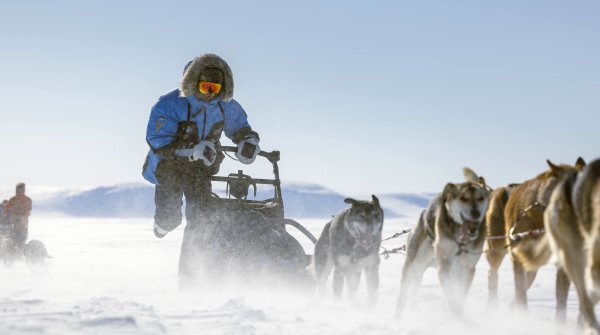The utilization of animal fibers carries a profound responsibility, as highlighted by a significant study published in Nature in 2018. This study starkly illustrates the disproportionate prevalence of humans and livestock, comprising an astounding 96% of the global mammalian biomass, while wild mammals, including revered predators like lions and bears, constitute a mere 4%. Additionally, it's noteworthy that 70% of all bird species are domesticated poultry, with wild birds making up the remaining 30% (1). While the primary purpose of these animals is often for meat, milk, and eggs, the fibers derived from them are predominantly considered by-products or waste. Nonetheless, these statistics emphasize the profound responsibility of agriculture and underscore the urgent imperative to transition to regenerative farming practices that prioritize biodiversity and, crucially, uphold animal welfare. The quest for solutions that strike a harmonious balance between ecological equilibrium and practical necessity is paramount. However, amidst discussions surrounding land utilization and the environmental and ethical implications of animal agriculture, it's essential not to overlook the numerous merits of animal fibers. They seamlessly blend high-performance technical attributes with robust durability and low maintenance demands, significantly reducing the ecological footprint (2). Moreover, when processed correctly, animal fibers possess the ability to biodegrade, aligning with the principles of circularity and waste reduction (3). The emergence of regenerative agriculture offers promise in ecosystem restoration. Within the Sustainability Hub, suppliers are dedicated to fostering more sustainable practices, thereby elevating the invaluable role of animal-derived materials in a conscientious manner.
The ZQRX wool sourcing program leads a significant shift in sourcing, emphasizing regenerative farming for positive social, animal, and environmental outcomes. Through holistic practices, it prioritizes sustainability and showcases wool's natural performance. Bluesky ZQRX 100% Merino Yarn is a product of meticulous Life Cycle Assessment (LCA) and the dedication of selected growers from cradle to gate, demonstrating its availability of bespoke programs tailored to brand needs. Südwolle Group and ZQRX share a commitment to a regenerative future, creating meaningful collective impact. The ZQRX program takes a holistic view with the collective aim to foster a healthier planet for generations to come.

HD Wool is on a mission to drive positive change by forging a meaningful connection between consumers and producers of this natural insulation. With fully traceable wool, consumers can now connect directly with the source through QR codes, guaranteeing transparency every step of the way. Through their innovative Woolkeepers platform they inspire British farmers to shift from extractive practices to regenerative agriculture. The programme is ensuring a fair price and thus supporting the transition. It empowers UK sheep farmers to enhance their ecosystems while ensuring soil health, plant resilience, animal welfare, and biodiversity.

Increasing environmental consciousness fuels a growing demand for sustainable solutions, like innovative materials made from European wool. European sheep play an important role in maintaining biodiversity, keeping landscapes open, protecting against erosion and landslides. However, a considerable amount of European wool finds no use, even though it’s a very valuable resource. Lavalan is a highly functional fibrefill made from traceable European wool, designed to provide a natural climate without overheating. This remarkable material is transforming the landscape of insulation and padding across various industries, offering a more sustainable alternative to synthetic fibrefills.

The International Down and Feather Bureau (IDFB) commissioned a Life Cycle Assessment by an independent third-party, Long Trail Sustainability. The Life Cycle Assessment evaluated the environmental impact of down vs synthetic fill by analyzing five environmental categories. The impact categories are human health, ecosystems, resources, cumulative energy demand and climate change. The LCA demonstrated that down has 85% - 97% lower impact than polyester in all five categories analyzed. In addition, down provides superior warmth without the weight. Down and feathers from IDFB members are an ethically sourced natural resource that can be reused and composted. The data clearly demonstrates that down is the most sustainable filling material.

 Sustainability4 tips to Green Deal-compliant packaging
Sustainability4 tips to Green Deal-compliant packaging
- Awards
- Mountain sports
- Bike
- Fitness
- Health
- ISPO Munich
- Running
- Brands
- Sustainability
- Olympia
- OutDoor
- Promotion
- Sports Business
- Textrends
- Triathlon
- Water sports
- Winter sports
- eSports
- SportsTech
- OutDoor by ISPO
- Heroes
- Transformation
- Sport Fashion
- Urban Culture
- Challenges of a CEO
- Trade fairs
- Sports
- Find the Balance
- Product reviews
- Newsletter Exclusive Area
- Magazine




